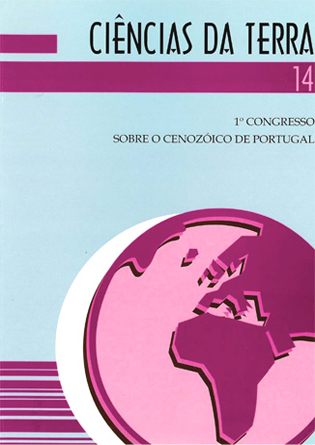Estratigrafia e interpretação paleogeográfica do Cenozóico continental do norte de Portugal
Abstract
Key words: Cenozoic; slratigraphy; sedimentology; fluvial deposits; basin analysis; palaeogeography; neotectonics; Portugal. Palaeogeographic and tectono-sedimentary interpretation of northem Portugal, in which previous studies (geomorphology, lithostratigraphy, mineralogy, sedimentology, palaeontology, etc.) were considered, is here proposed. Cenozoic shows different features according to its morphotectonic setting in the eastem region (Trás-os-Montes) or near to the Atlantie coast (westem region, Minho and Douro Litoral areas). Although in lhe eastern region lhe sedimentary record is considered late Neogene, in some places Paleogene (?) was identified. This oldesl reeord, represented by alluvial deposits, was preserved from complete erosion because of its position inside Bragança-Vilariça-Manteigas fault zone grabens. Later sedimentary episodes (upper Tortonian-Zanclean ?), represented by two allostratigraphical units, were interpreted as proximal fluvial braded systems of an endorheic hydrographie network, draining to the Spanish Duero Basin (eastwards); nowadays, they still remained in tectonic depressions and incised-valleys. Later on, eastem sedimentation becames scarcer because Atlanlic fluvial systems (e.g. lhe pre Douro), successively, captured previous endorheic drainages. The proximal reaches of the allostratigraphic unit considered Placencian is recorded in Mirandela (westem Trás-os-Monles) but the following fluvial episode (Gelasian-early Pleislocene ?) was already documented in east Trás-os-Montes, preserved in high plalforms and in tectonic depressions. Placencian and Quatemary sedimentary records in the westem coastal zone, mainly represenled by terraces, are located in the Minho, Lima, Alvarães; Cávado and Ave large fluvial valleys and in the Oporto littoral platform. ln conclusion, northem Portugal Tertiary sedimentary episodes were mainly controlled by tectonics, but later on (placencian-Quatemary) also by eustasy.Downloads
Issue
Section
Articles






